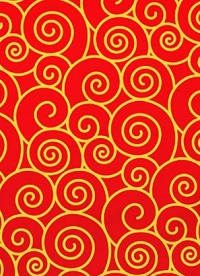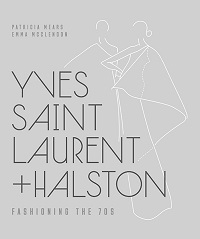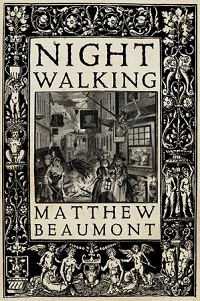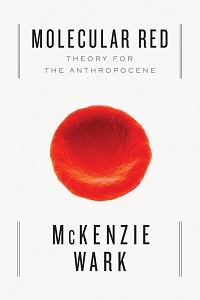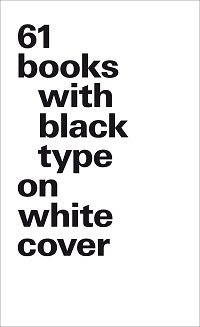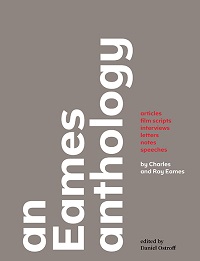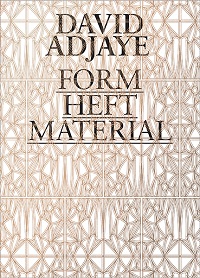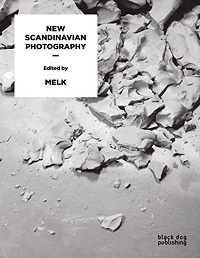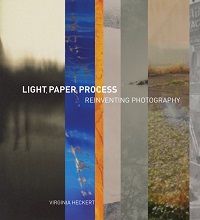Click on the image for more information, and to purchase
Fashion
For centuries, China’s export arts—jade, silks, porcelains, and, more recently, cinema—have fuelled Western fantasies of an exotic East and served as enduring sources of inspiration for fashion. This stunning publication explores the influence of Chinese aesthetics on designers, including Giorgio Armani, Christian Dior, Jean Paul Gaultier, Karl Lagerfeld, Ralph Lauren, Alexander McQueen, and Yves Saint Laurent. Drawing upon Chinese decorative arts, cinema, and costume—notably imperial court robes, the close-fitting cheongsam, and the unisex Mao suit—their designs are fantastical pastiches of anachronistic motifs. As in the game of “telephone,” the process of cultural translation transforms the source material into ingeniously original fashions that are products solely of the designers’ imaginations. In a similar way, contemporary Chinese film directors render fanciful, highly stylized evocations of various epochs in China’s history—demonstrating that China’s imagery is equally seductive to artists in the East and further inspiring today’s designers. Juxtaposing modern fashions and film stills with their forebears in fine and decorative arts and historical dress, this book reveals the rich and ongoing creative dialogue between East and West, past and present.
This fascinating publication is the first to examine side by side the careers and work of two of the biggest names in 20th-century fashion, Yves Saint Laurent (1936–2008) and Halston (1932–1990). Their designs—chic, sexy, and glamorous—came to exemplify the 1970s, a singular and dynamic era in fashion history. Inspired by menswear, foreign cultures, and wide-ranging historical periods, and employing new fabrics, YSL and Halston together crafted a new and distinctly modern way of dressing. Moreover, although their output differed and they were based on different continents, the two designers shared many career parallels. A visual timeline of the designers’ lives illustrates how their rises and falls, from the 1950s to their respective struggles in the 1980s, were surprisingly in sync. Engaging passages by Patricia Mears and Emma McClendon discuss the social, cultural, and economic factors that influenced both designers, and their subsequent impact on fashion—including the rise of the star designer as personality, the cult of celebrity, and the creation of the fashion conglomerate. The authors also address the importance of colour, cutting-edge materials, innovative construction techniques, accessories, and perfume to both designers’ aesthetics. Remarkable photographs of the designers and their garments round out this essential volume on two figures who made an indelible mark on fashion history.
Theory
“Cities, like cats, will reveal themselves at night,” wrote the poet Rupert Brooke. Before the age of electricity, the nighttime city was a very different place to the one we know today – home to the lost, the vagrant and the noctambulant. Matthew Beaumont recounts an alternative history of London by focusing on those of its denizens who surface on the streets when the sun’s down. If nightwalking is a matter of “going astray” in the streets of the metropolis after dark, then nightwalkers represent some of the most suggestive and revealing guides to the neglected and forgotten aspects of the city." In this brilliant work of literary investigation, Beaumont shines a light on the shadowy perambulations of poets, novelists and thinkers: Chaucer and Shakespeare; William Blake and his ecstatic peregrinations and the feverish ramblings of opium addict Thomas De Quincey; and, among the lamp-lit literary throng, the supreme nightwalker Charles Dickens. We discover how the nocturnal city has inspired some and served as a balm or narcotic to others. In each case, the city is revealed as a place divided between work and pleasure, the affluent and the indigent, where the entitled and the desperate jostle in the streets.
In Molecular Red, McKenzie Wark looks for ways to think, and perhaps even combat, the philosophical foundations of the Anthropocene. Throughout the great upheavals of the past 300 years, the carbon economy has been predominant. It was at the centre of both the Soviet and the American empires and, as a result, both are doomed to fail. "Out of the ruins of this devastated, desert landscape, we must salvage what might help us understand the future. Thus Wark revisits the work of Alexander Bogdanov – Lenin’s rival – and the great Proletkult writer and engineer Andrey Platonov. In this reading, the Soviet experiment emerges from the past as an allegory for our time."Moving toward the present, in the midst of Empire’s fall, Wark reads Donna Haraway’s cyborg critique and science fiction writer Kim Stanley Robinson’s Martian utopia as powerful resources for grasping the world that the climate change has wrought. Wark proposes an alternative realism, where hope can be found amongst what remains and endures.
Graphic Design
The designer Bernd Kuchenbeiser loves books – some because of their content, some because of their appearance. His library expands constantly and not only for professional reasons; there are plenty of volumes he loves to have on his shelves simply because he finds them such beautifully designed objects. A "good book" and whatever it is that makes a book beautiful are not easy to define – the details of a design may well suit one book to perfection, but be very much out of place with another publication. A good book never wants to be left on the shelf – it needs to be read, examined, discussed, and it was with all of this in mind that the author launched his Website "A Good Book", where publications of many different genres are presented as if in an intimate diary, and discussed not only in terms of their content, but also in the context of their creative design, or the pleasures to be had from holding and examining them. He was quick to notice how many of these fine books had a simple design combination of black text on a white background. This observation is why 61 books with black type on white cover came into being as an "analogue" selection from the website: each book here is presented with the cover, a bibliography and a short text, anecdote, or even a quotation to initiate discussion. Much care, effort and affection was lavished on compiling and designing a reader – this is an anthology which of course also references the black and white thematic focus. 61 books with black type on white cover is available in two sizes: a small reader in paperback format or as a large display volume with the covers in the original dimensions.
Design
An Eames Anthology collects for the first time the writings of the esteemed American architects and designers Charles and Ray Eames, illuminating their marriage and professional partnership of fifty years. More than 120 primary-source documents and 200 illustrations highlight iconic projects such as the Case Study Houses and the molded plywood chair, as well as their work for major corporations as both designers (Herman Miller, Vitra) and consultants (IBM, Polaroid). Previously unpublished materials appear alongside published writings by and about the Eameses and their work, lending new insight into their creative process. Correspondence with such luminaries as Richard Neutra and Eero Saarinen provides a personal glimpse into the advance of modernity in mid-century America.
Architecture
Born in Tanzania, David Adjaye is rapidly emerging as a major international figure in architecture and design—and this stunning catalogue serves only to cement his role as one of the most important architects of our time. His expanding portfolio of important civic architecture, public buildings, and urban planning commissions spans Europe, the United States, Africa, Asia, and the Middle East. He transforms complex ideas and concepts into approachable and innovative structures that respond to the geographical, ecological, technological, engineering, economic, and cultural systems that shape the practice of global architecture. The publication of this compendium of work and essays coincides with the scheduled opening of Adjaye’s National Museum of African American History and Culture on the National Mall in Washington, D.C. Adjaye’s completed work in the United States includes the Museum of Contemporary Art in Denver, a pair of public libraries in D.C., and several private residences. He is also known for his collaborations with artists, most recently with the British painter Chris Ofili. Following an introduction by Zoë Ryan, Adjaye writes on his current and future work, with subsequent essays by an extraordinary cadre of architectural scholars on Adjaye’s master plans and urban planning, transnational architecture, monuments and memorials, and, finally, the forthcoming museum in D.C. Portfolios of Adjaye’s work thread throughout this comprehensive volume.
Photography
The first comprehensive study of the contemporary Scandinavian photography scene produced in collaboration with MELK, the book documents the shift in Scandinavian photography away from a documentary practice and towards a fine- art discourse. Since the late 1980s Scandinavian photography has evolved into an internationally recognised art scene, with the past two decades seeing a transition from traditional photo-journalistic practice towards a fine-art discourse. Focusing on the last ten years, New Scandinavian Photography highlights the work produced by a diverse range of artists who are exploring and manipulating the use of photography in their practices and explores photography as a medium through academic texts and interviews, addressing the technical and material properties of photography in the context of fine art and pan-media practice with a focus on the exhibition room as well as printed matter. Through critical examination and personal interviews, the book showcases established names in the photographic art scene such as Asger Carlsen and Emil Salto, along with emerging talents that include Marten Lange and Marthe Elise Stramund. A key focus is upon artist’s use of photography as a medium, along with their methods of presentation, from the white cube gallery space to intimate printed matter.
From its beginnings, photography has been shaped by the desire to understand and explore the essence of the medium. Light, Paper, Process features the work of seven artists—Alison Rossiter, Marco Breuer, James Welling, Lisa Oppenheim, Chris McCaw, John Chiara, and Matthew Brandt—who investigate the possibilities of analogue photography by finding innovative, surprising, and sometimes controversial ways to push light-sensitive photographic papers and chemical processing beyond their limits. A panoply of practices emerges in the work of these artists. Some customize cameras with special lenses or produce images on paper without a camera or film. Others load paper, rather than film, in the camera or create contact-printing with sources of light other than the enlarger, while still others use expired photographic papers and extraneous materials, such as dust and sweat, selected to match the particular subject of the photograph. All of the artists share a willingness to embrace accident and chance. Trial and error contribute to an understanding of the materials and their potential, as do the attitudes of underlying curiosity and inventive interrogation. The act of making each image is like a performance, with only the photographer present. The results are stunning.
_______________

